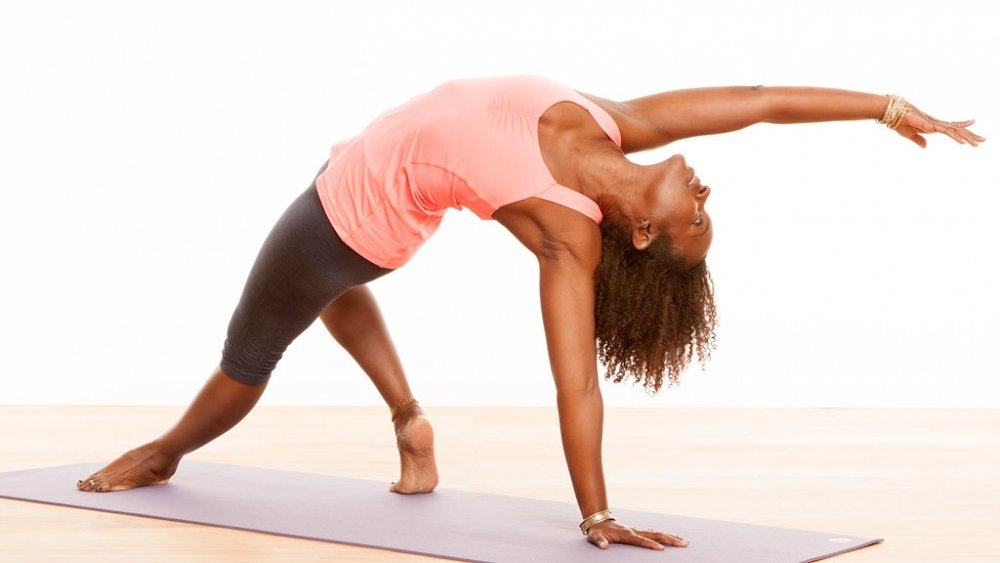
Yoga is a great method to improve flexibility. It can help you overcome stiffness and joint aches. It is common for new practitioners to feel restricted in hip flexibility and hamstring flexibility. This inflexibility can lead to poor posture and strain on the knee joint. It also decreases levels dopamine or serotonin which are neurotransmitters known to improve mood and reduce anxiety.
One study shows that yoga can reduce the pain of chronic low back problems. This condition is one of the most common forms of back pain in veterans. It can severely impact a person's ability to live a normal life. After the 12-week yoga program, participants experienced lower disability scores and greater intensity. Participants also reported a decrease in opioid use, which is important for those with chronic low back pain. The benefits of yoga have been extensively documented.
Yoga exercises can be used to reduce stress. These exercises will not only improve your lymph flow but they can also help you to feel better overall. You can increase your lymph drainage system by practicing. This is a crucial part of the body. The lymphatic system is responsible to prevent infection, kill cancer cells, and dispose of harmful waste products. Regular practice of yoga can make you feel less stressed, which can be a good thing for your sleep.

Constipation can be exacerbated by stress, but yoga can reduce this by improving your posture and increasing your flexibility. It can also help reduce suffering which can be a big benefit. As a result, stress is also a major contributor to bowel issues. Yoga can help with constipation. It helps you be more present and improves your ability focus, learn, hold information, and learning.
Research has also shown that yoga may improve your heart health. Yoga has been shown to increase hemoglobin. This protein carries oxygen from the tissues. This is another beneficial effect of yoga. In addition to improving your heart health, it can also reduce the risk of cardiovascular disease and strokes. It has been proven to improve muscle strength and flexibility, especially in the feet and hands. It has been shown to improve balance for many reasons.
Yoga benefits extend to the spine discs. The intervertebral discs between vertebrae are essential in preventing the compression of nerves and herniated spines. The discs of the spine are mobile by moving these discs. You should therefore practice a variety if yoga poses in order to maintain spinal health. You can increase your flexibility by doing asanas in this position.
Yoga has many benefits. It can help you fight anxiety and depression. In a 2015 study, researchers found that participants who performed yoga twice a week had lower levels of stress and improved cardiovascular function. This means they are less likely for heart disease. While this is a small benefit, it's one of the most powerful. It helps them feel better about their bodies and themselves.

Yoga, like other types of exercise can also improve the heart. This is because yoga helps to pump blood throughout the entire body. This means that it helps to improve the overall health of the heart. This, in turn, helps to lower the risk of heart disease. Yoga can improve your cardiovascular health and lower your risk of developing heart disease. There is also no reason why you shouldn't try this exercise.
Yoga can not only improve your physical health but also help you to reduce your risk of developing heart diseases. It slows down the progression in cardiovascular diseases by reducing cholesterol levels and other inflammatory substances. It can reverse DNA mutations and lower cortisol levels. It can protect against heart attacks, migraines, osteoporosis, and other conditions such as strokes. It is also great for mental health, as it can help you cope with stress and improve your concentration.
FAQ
What is the best workout order?
It depends on what you are looking for. To build muscle mass, you should first lift heavy weights. Then move into cardio. If you are looking to lose weight, then move on to strength training.
Cardio is a great way to lose fat if you are just looking for a quick workout. Add strength training to your workouts.
If you are looking for muscle mass, cardio should be your last option. Cardio stimulates growth hormones and helps build muscle mass.
Also, eat before you workout. This will give your muscles more fuel, so they work harder. It will also make you feel more energetic during your workouts.
How to Build Muscles Fast
The best way to quickly build muscle is to eat healthy and exercise regularly.
Early morning is the best time to exercise. You are awake and alert, ready to take on the day.
Exercises such as push-ups and bench presses are good options.
You can try different weight training methods and remember to drink lots of water throughout the day.
Is it true that kidney stones can be caused by overeating protein?
Protein is important for maintaining healthy bones and tissue. Too much protein can cause calcium to be excreted through the urine. This can lead to kidney stones.
It's important to note that not everyone gets kidney stones after eating more than 2 grams of protein per kilogram (2.2 pounds) of body weight. People can eat large amounts of protein and not get kidney stones.
Your sodium intake can prevent kidney stone formation. The kidneys regulate the amount of sodium they consume. Too much sodium can cause kidney stones.
You can also try reducing your protein intake if you get kidney stones. About half of adults' daily caloric intake is made up of protein. If you cut back on protein, you'll likely lose weight.
If you do decide to eat more protein, don't go overboard. Do not eat more than 20% of your daily calories from protein.
Statistics
- An estimated calorie range for moderately active adult males falls between 2,200 to 2,800 calories per day, depending on age. (eatright.org)
- By John Thompson Take a whopping 38% off a set of PowerBlock Pros. (menshealth.com)
- 10 pounds in a month is likely during a lean bulking phase, especially for beginners. (muscleandstrength.com)
- According to the American Academy of Dermatology (AAD), men over 50 are at a heightened risk of developing it. (healthline.com)
- Candidates and applicants must pass all four tests at 70% (minimum level) to graduate from Basic Deputy U.S. Marshal (BDUSM) Training. (usmarshals.gov)
External Links
How To
What nutrients does a man require daily?
Healthy growth and development of men requires healthy nutrition. Vitamins, minerals, vitamins, nutrients, carbohydrates, fats and fiber are all essential for the body.
Specific nutrients are also required by the male body at different times during the day. To give you an example, the body uses energy it receives from food to make hormones and antibodies. You use protein to build muscles and repair damaged tissue when you wake up.
Your body will burn fat at night and store the extra energy as a form of glycogen. Your body will still need nutrients, but it will require fewer calories during this time. You may have an occasional snack during the evening hours if you feel hungry.
To fuel your muscles while you train, you will need sufficient carbs as well as protein. You may feel sore muscles if you exercise hard.
You must ingest carbs and protein within two hours of training to prevent this. Your body will break down stored glycogen to provide glucose for energy.
Additionally, it is important to eat protein right away after your workouts are over. This prevents muscle tissue being destroyed while you're sleeping.
Your body produces lactic acid during high levels of physical activity. It builds up in your bloodstream, which can lead to fatigue. Eat foods high in carbohydrate, such as fruits, vegetables, to avoid this.
Carbohydrates offer your body the energy it needs for recovery from exercise.
In addition, you may want to include lean meats, fish, eggs, milk, cheese, yogurt, beans, nuts, and seeds into your diet.
All of these foods contain high-quality protein. Protein promotes muscle growth and repairs damaged tissues. It provides amino acids that your body needs in order to produce sexhormones and testosterone.
For healthy skin, hair and joints, it is important to eat enough fats. Healthy men need between 20% and 35% of their total caloric intake from fat.
Fat is good for your heart and helps you fight cancer. Your brain also functions properly thanks to fat.
Most of the fat you need can be obtained from vegetable oils, including sunflower oil (or soybean oil), peanut oil, peanut oil, soybean oil, and peanut oil.
These oils have high amounts of monounsaturated oil fatty acids, (MUFAs). MUFAs can lower cholesterol levels and reduce inflammation. They protect your cells against free radical damage.
Saturated fats (SFAs), are found mainly in animal products such as meat, milk products, and butter. SFAs increase LDL ("bad") cholesterol, and increase triglycerides. They promote weight gain and abdominal fat.
Polyunsaturated fats (PUFAs) are found in plant-based sources like vegetable oils, nuts, seeds, and grains. PUFAs reduce inflammation and improve cardiovascular function. They are also good for controlling blood sugar and cholesterol.
Low HDL ("good") cholesterol can lead to erectile problems in men. Saturated fats are a major source of bad cholesterol. This lowers good cholesterol.
Red meat and pork are a common source of prostate problems in men who eat a lot. High temperatures can cause nitrates to become nitrosamines. These compounds can cause lung cancer.
Most processed meats contain nitrites and other harmful chemicals. They should be avoided.
The American Heart Association suggests that no more than two servings per week of red meat should be consumed. Choose poultry, fish and legumes instead.